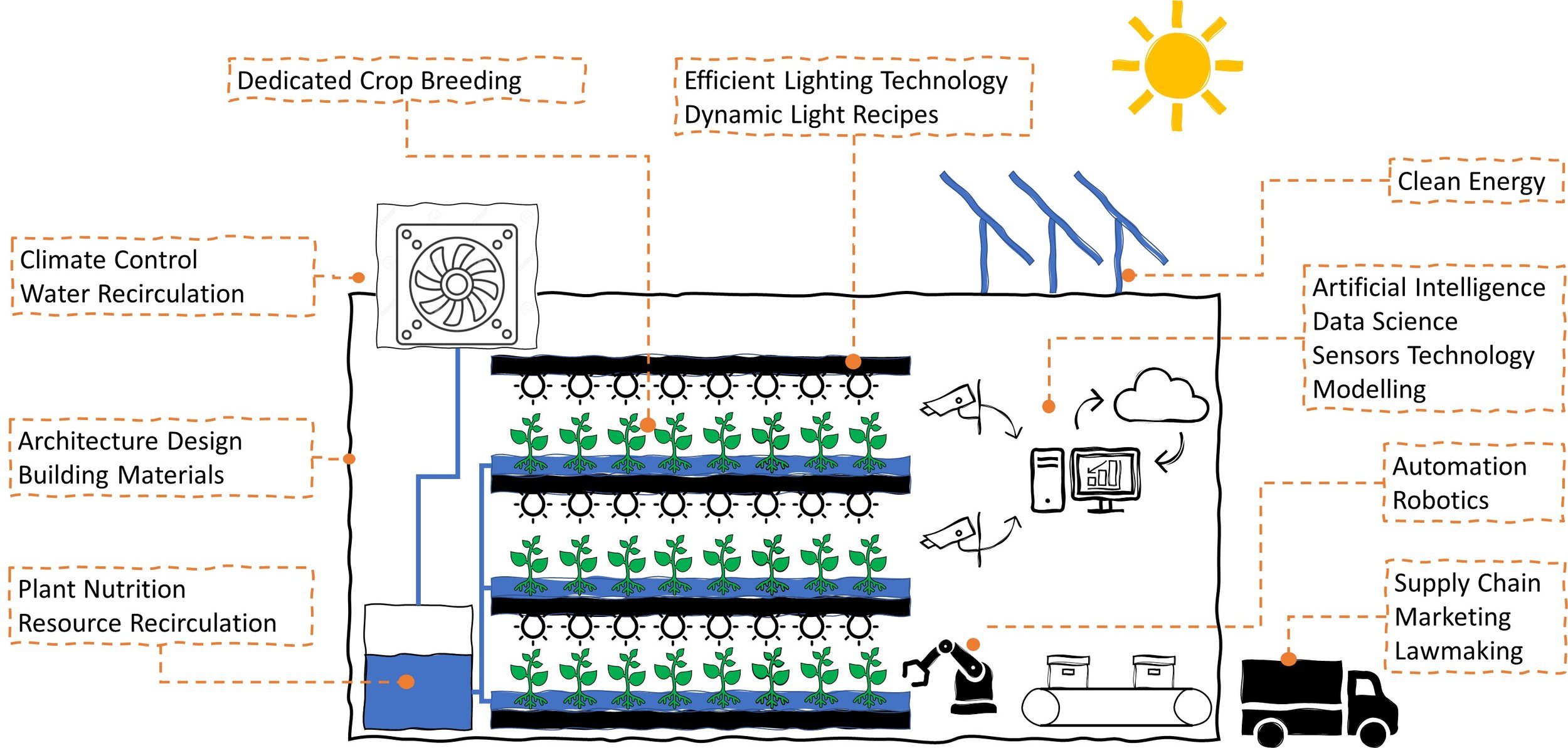Sustainable Cities and Society
Synergetic urbanism: a theoretical exploration of a vertical farm as local heat source and flexible electricity user
Tess Blom, Andy Jenkins, Andy van den Dobbelsteen
Highlights
•Explores the potential of vertical farms as heat source for heat networks.
•Explores the potential for flexible electricity use in a vertical farm.
•The energy system with integrated vertical farm reduced energy use by 15 %.
•Flexible electricity use by vertical farms significantly reduces costs.
Abstract
The urban energy transition requires innovative heating and cooling systems, as well as enhanced flexibility in electricity usage. This paper explores the theoretical potential for vertical farms to contribute to the energy transition by supplying residual heat to local district heat networks and flexible electricity usage. A stepped approach was used to design energy systems that achieve thermal energy balance through heat and cold exchange between a vertical farm and buildings within a specific Dutch neighbourhood. Furthermore, alternative lighting strategies for vertical farms were explored to reduce grid congestion and to respond to electricity price fluctuations, limiting the mismatch between electricity generation and demand. Compared to the baseline scenario, the energy system with an integrated vertical farm reduces overall energy use by 15 %, even when accounting for the farm's electricity use. By adopting intermittent lighting that is better aligned with electricity price fluctuations, the vertical farm obtained annual cost savings of 14 %. The integration of vertical farms into energy systems can, therefore, contribute to the urban energy transition by producing residual heat to balance thermal energy system and save money for growers by optimising LED operations to align with electricity price fluctuations, whilst producing fresh vegetables for the city.
